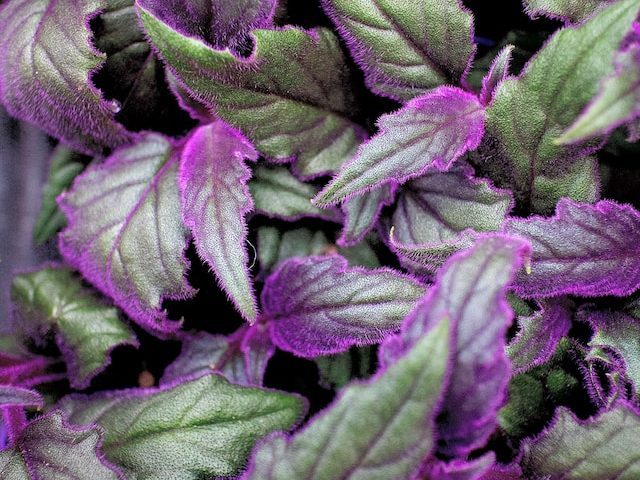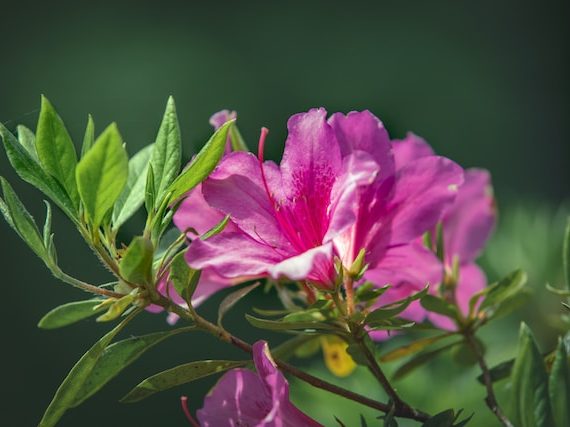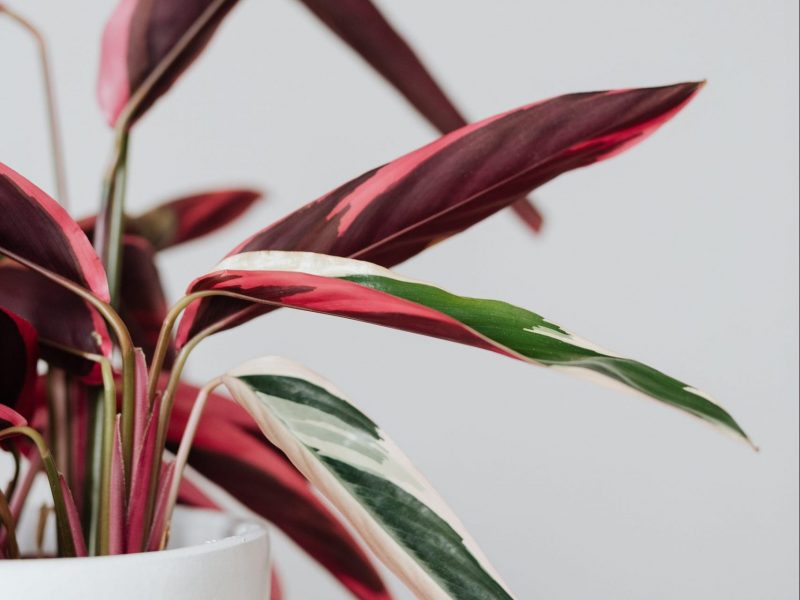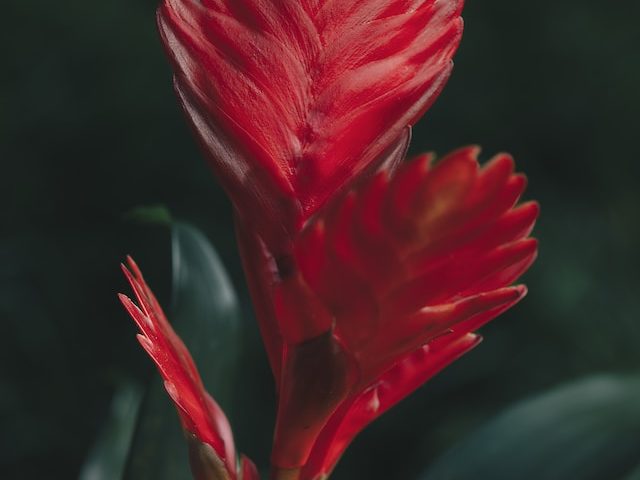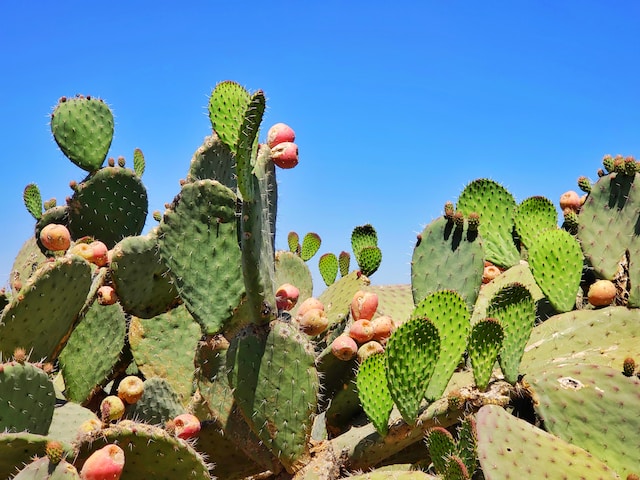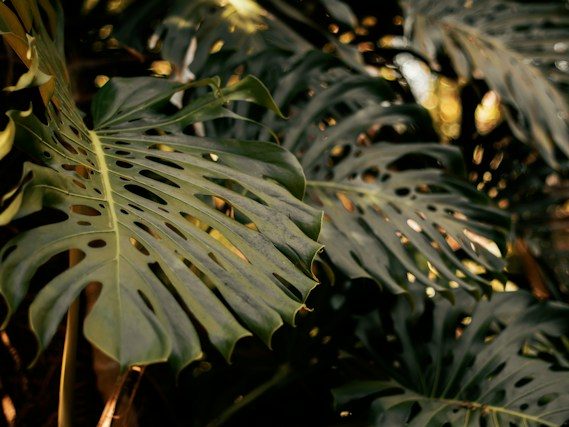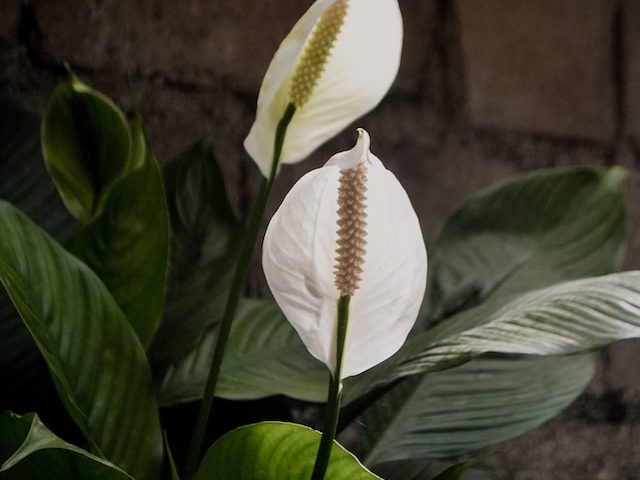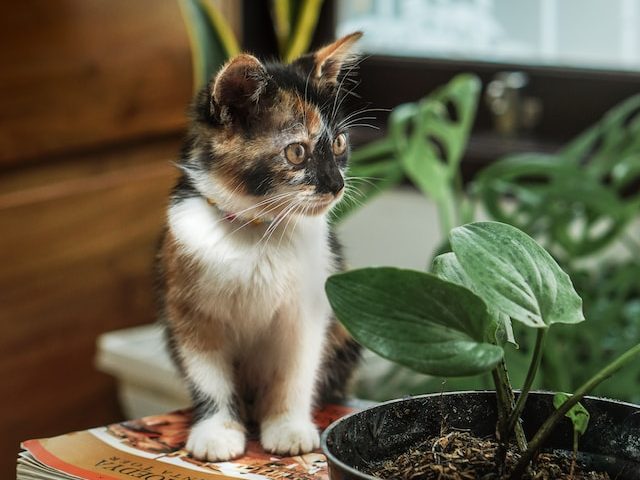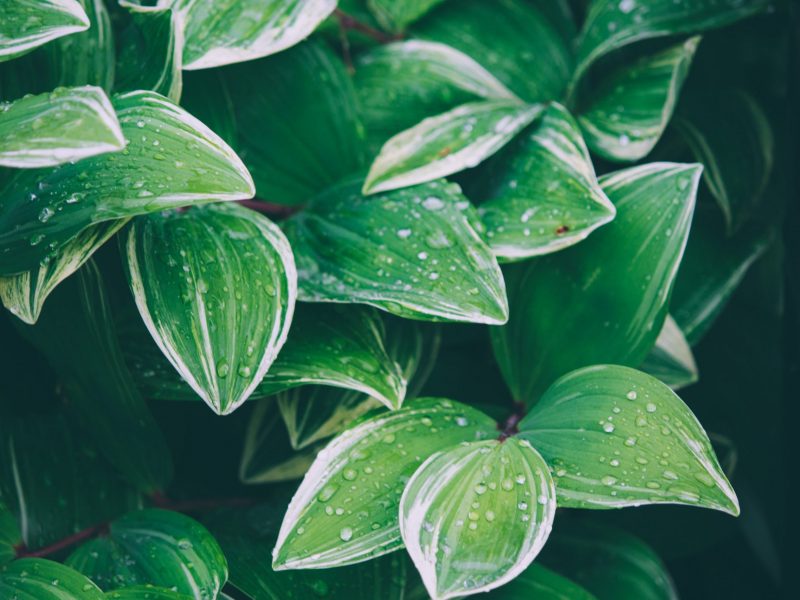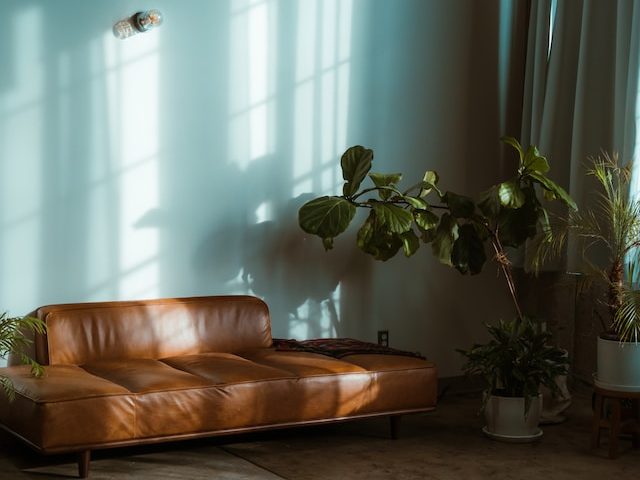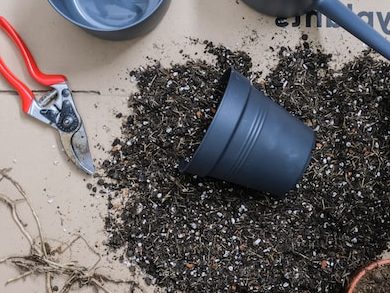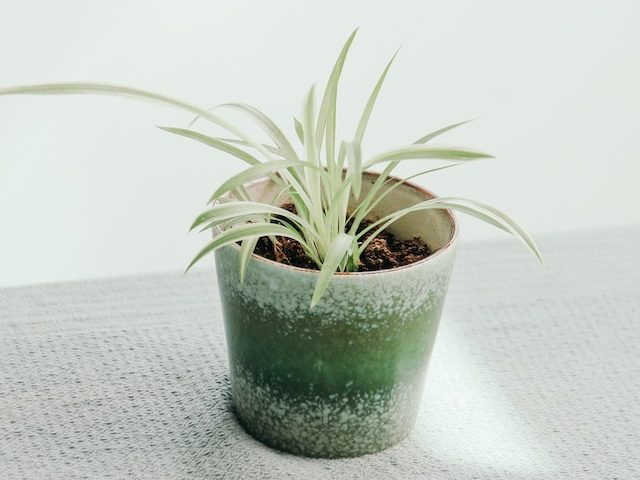Pinstripe Calathea
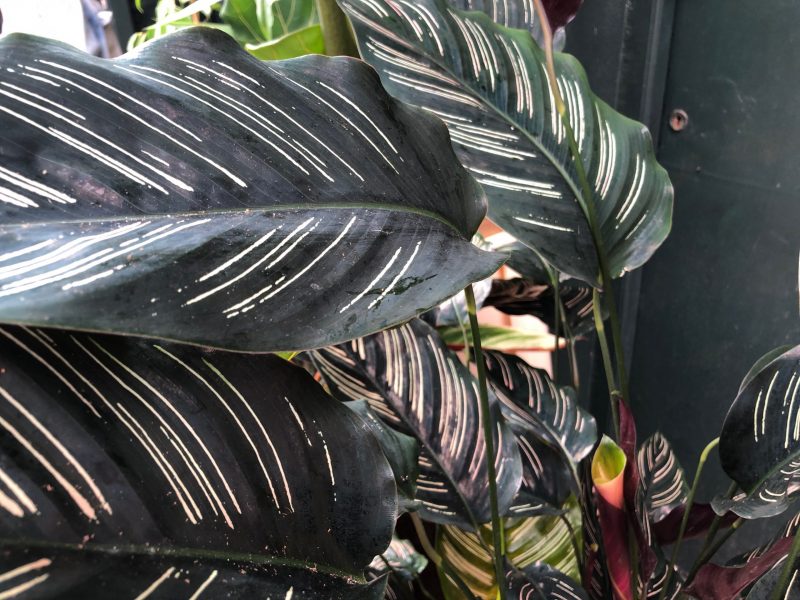
Introduction to the Pinstripe Calathea
The Pinstripe Calathea, scientifically known as Calathea ornata, is an eye-catching tropical plant native to South America, particularly Colombia and Venezuela. Known for its distinctive foliage, the plant boasts dark glossy leaves adorned by delicate pink lines, resembling the intricacies of a pinstripe pattern, hence the common name.
The Pinstripe Calathea is commonly referred to as a “prayer plant” due to its unique circadian rhythm. As the sun sets, the plant’s leaves will fold upwards, which looks like hands coming together in prayer.
Pinstripe Calathea Characteristics
Size and Growth
Typically, a Pinstripe Calathea grows up to roughly 2 feet in height when grown as a houseplant. The plant is slow-growing, but with proper care and favorable conditions, it can reach its full height in a few years’ time. The leaves extend from long, slender stalks and can grow up to 18 inches in length but factors such as light can impact their size.
Foliage
The beauty of the Pinstripe Calathea lies in its distinctive and unique foliage. The plant’s long, lance-shaped leaves are a deep, mid to dark glossy green and adorned with thin lines of light pink to white. These stripes run along the veins of the leaves, giving the plant its common name. The undersides of the leaves are a rich, purple-red which you can see a lot more of when the plant folds up its leaves.
Flowers
While not commonly seen when grown as a houseplant, the Pinstripe Calathea does produce flowers under optimal conditions. The flowers are small and inconspicuous, typically appearing in the summer months but sometimes at other points of the year too. They’re pink and white in color and neatly tucked within the plant’s foliage.
Root System
The root system of the Pinstripe Calathea is shallow, meaning it does not require a deep pot for growth. However, the roots are sensitive and need proper care to prevent damage.
The Growth Cycle and Rate of Pinstripe Calathea
The Pinstripe Calathea typically follows a seasonal growth pattern, with its main growth periods occurring during the warmer, humid months of spring and summer. Its growth rate slows down during the cooler months of fall and winter, often entering a dormancy-like phase where its energy is conserved for the next growth period.
During the growing season, new leaves emerge from the center of the plant, unfurling into the plant’s distinctive pinstriped pattern.
Key Stages of the Pinstripe Calathea Growth Cycle
- Spring: As temperatures rise and daylight hours increase, the Pinstripe Calathea begins its growing season. New leaves start to appear, and the plant will benefit from increased watering and misting to mimic its natural humid environment.
- Summer: This is a period of rapid growth, where diligent watering, feeding, and pruning are crucial. The plant will continue to produce new leaves and may even produce flowers.
- Fall: As the days grow shorter, growth starts to slow down. Watering should be reduced, and feeding should stop to allow the plant to prepare for its rest period.
- Winter: This is the plant’s rest period. It’s important to keep the plant warm and to reduce watering even further. The plant will not grow much during this time, but this is perfectly normal and part of its natural growth cycle.
Light and Temperature Requirements for Pinstripe Calathea
Light Requirements
The Pinstripe Calathea is not a fan of direct sunlight. In fact, placing your Calathea in an area with direct sunlight can cause the beautiful pinstripes on the leaves to fade, and in severe cases, it can lead to scorched leaves. Ideally, this plant prefers to be placed in a well-lit spot, with plenty of bright but indirect light.
Temperature Requirements
Originating from the tropical forests of Brazil, the Pinstripe Calathea is accustomed to a warm and humid environment. It generally prefers temperatures between 65°F (18°C) and 85°F (29°C). Anything below this range for long periods of time can cause the plant to stop growing, while anything above may lead to the leaves becoming crispy.
Avoid placing your Pinstripe Calathea near drafts, air conditioning vents, or heaters as these can cause sudden fluctuations in temperature which the plant does not handle well. Using a digital thermometer in your home is a great way for you to make sure your Calathea is getting the right amount of warmth across the year.
Watering and Humidity Needs of Pinstripe Calathea
Watering Needs
The Calathea ornata has specific watering requirements that need careful attention. Overwatering or underwatering can lead to issues such as leaf yellowing, wilting, or even root rot.
- Water Frequency: Generally, watering once a week is sufficient, but this can vary based on the season and environment. The soil should be kept moist, but not waterlogged. In warmer months, you may need to water more frequently.
- Water Quality: Pinstripe Calatheas are sensitive to the chemicals found in tap water. It’s best to use filtered, distilled, or rainwater if possible. If using tap water, let it sit out overnight to allow the chlorine to evaporate before watering the plant.
- Watering Method: Directly water the soil, taking care not to splash the leaves. This prevents the risk of leaf spot disease, which is caused by sitting water on the foliage. The best way to do this is to use a watering can with a long thin spout.
Humidity Needs
As a tropical plant, the Pinstripe Calathea craves high humidity. While it can tolerate average household humidity, it truly thrives in a more humid environment to prevent the most common issue of dry brown leaf tips and leaf edges.
- Humidity Levels: A humidity level between 50% and 60% is ideal for this plant. Use a hygrometer to measure the humidity in your home.
- Increasing Humidity: If the air in your home is too dry, there are several ways to increase humidity. This includes misting the leaves regularly, using a humidifier, or placing the plant on a water-filled pebble tray.
- Location: Kitchens and bathrooms often have higher humidity levels due to the use of hot water. Therefore, these may be good locations for your Pinstripe Calathea (just be careful that it’s not too close to the cooker if placing it in the kitchen as this can dry out the plant quickly).
Soil and Fertilizer Requirements
When it comes to soil, our Calathea friend prefers a well-draining mix. A standard houseplant potting mix with perlite or sand to improve drainage will serve the plant well. Calathea ornata is indigenous to the tropical rainforests of South America, where it typically grows in the rich, loamy soil of the forest floor. This is why it appreciates an organic-rich, slightly acidic soil mix in the household environment.
Moving onto fertilizer requirements, the Calathea ornata does not require heavy feeding but the occasional dose of fertilizer can give new growth a real boost. A balanced liquid houseplant fertilizer, diluted to half the recommended strength, will suffice.
Frequency: Feed your Pinstripe Calathea once a month during the growing season (spring and summer) and avoid feeding during the dormant winter months.
Pruning your Pinstripe Calathea
Pruning your Pinstripe Calathea not only ensures a tidier and more appealing look for your plant but also promotes healthier growth. By removing dead or damaged leaves, you create room for fresh, vibrant leaves to flourish, making your Calathea more attractive and bushier.
The best period to prune your Pinstripe Calathea is during the spring and summer, which is its active growing season. However, if you notice any unhealthy leaves throughout the year, remove them immediately, regardless of what time of year it is.
Here’s a helpful step-by-step guide on how to prune your Calathea:
- Identify: The first step is to identify the leaves that need pruning. Look for yellow, brown, or wilted leaves, as these are indicators that the leaf is no longer healthy. You may also want to prune areas of your plant that are leggy or outgrowing your space.
- Prepare: Once you’ve identified the leaves, prepare your pruning tools. A clean pair of sharp scissors or pruning shears will do the job. Remember to sterilize your tools before use to prevent the spread of plant diseases.
- Prune: Cut the unhealthy leaf at the base of the stem, taking care not to harm the main stem or nearby leaves. It’s best to make a clean cut to help the plant heal faster.
- Dispose: After pruning, dispose of the cut leaves properly. Leaving them around can attract pests that might harm your plant.
If you’re a first-time plant owner, pruning might seem a daunting task. But with patience and a bit of practice, it can become a simple and rewarding part of your plant care routine and it can make a massive difference to your plant’s overall health and wellbeing.
Decorating Your Home with Pinstripe Calathea
Not only does this plant purify the air around it, but it also adds a touch of elegance and sophistication to any setting, making it an ideal decorative piece for your home.
However, there are a few different things to get right before incorporating this plant into your home’s interior design. Here are a few tips to consider:
- Location: Place your Pinstripe Calathea in an area with bright, indirect light. Harsh sunlight can cause the leaves to fade and lose their distinct pinstriped pattern. A north or east-facing window, for instance, would be an ideal location.
- Container: Choose a decorative pot that complements your home’s decor, but also ensures proper care for the plant. The pot should have adequate drainage to prevent waterlogging, a condition that the Pinstripe Calathea dislikes.
- Grouping: Grouping Pinstripe Calatheas with other houseplants can not look great but also help with boosting the humidity. Just make sure each plant has enough space for healthy growth.
Common Pests and Diseases Affecting Pinstripe Calathea
The Pinstripe Calathea can fall prey to common household plant pests if its surroundings aren’t properly maintained or if it’s not given the appropriate care. Here are some of the most common pests and diseases that can affect your Pinstripe Calathea as well as some advice on how to deal with them.
Spider Mites
Spider mites are tiny pests that can cause severe damage to your Pinstripe Calathea (we’ve been there and it’s a real pain!). They usually appear when the air is too dry, which is particularly harmful to Calatheas that prefer humid conditions. Spider mites suck the sap from the plant, causing the leaves to turn yellow and eventually fall off.
Prevention and Treatment: Increase humidity levels and regularly mist your Pinstripe Calathea to ward off spider mites. If an infestation occurs, isolate the affected plant and use a mild insecticidal soap or neem oil to treat it. We also recommend trimming away the worst affected areas to cut down the size of the infestation to make it slightly easier to treat.
Mealybugs
Mealybugs are another common pest. They are small, white, and have a cottony appearance. Like spider mites, they suck the sap from the plant, leading to yellowing and drooping of leaves.
Prevention and Treatment: Regularly inspecting your plant and cleaning the leaves can help prevent a mealybug infestation. If you do notice mealybugs, isolate the plant and wipe off the bugs with a cotton swab dipped in rubbing alcohol.
Root Rot
Root rot is a disease often caused by overwatering, which creates an environment conducive to fungus and bacteria. It can be fatal to the plant if not treated promptly and effectively and the issue can occur quite quickly.
Prevention and Treatment: Avoid overwatering and ensure your Pinstripe Calathea has good drainage. If you notice signs of root rot, such as wilting leaves and a foul smell, you may need to repot the plant in fresh soil and trim any affected roots.
Pinstripe Calathea Toxicity
The Pinstripe Calathea is non-toxic to both humans and pets. This makes it an excellent choice for homes with curious cats, dogs, or toddlers who may accidentally ingest part of the plant.
However, it is always a good idea to prevent any pet or child from chewing on any houseplant as while non-toxic, consuming parts of the plant may not be entirely free of consequences.
- Humans: Ingesting parts of the plant may lead to mild discomfort in the stomach or throat due to the rough texture of the leaves.
- Pets: Pets, particularly cats and dogs, may experience mild oral and gastrointestinal irritation after chewing or swallowing pieces of the plant. Symptoms may include drooling, vomiting, or diarrhea.
Cleaning your Plant: Why, When and How
Maintaining the cleanliness of your Pinstripe Calathea is not just about enhancing its aesthetic appeal; it’s an essential part of plant care that contributes significantly to its overall health as dust and grime on the leaves can hinder the plant’s photosynthesis process.
When to Clean Your Pinstripe Calathea
A good rule of thumb is to include leaf cleaning in your monthly plant care routine. This way, you’re ensuring not only the beauty of the plant but also its overall well-being.
How to Clean Your Pinstripe Calathea
- Prepare the Cleaning Solution: Mix a few drops of mild dish soap with water in a spray bottle. This solution is gentle enough not to harm your plant while being effective in removing dust and grime. Don’t use any other chemicals on your plant as they can damage the leaves.
- Remove Loose Dirt: Before applying the solution, use a soft brush or cloth to gently remove any loose dust from the leaves.
- Apply Cleaning Solution: Spray the soap solution lightly onto the leaves, taking care not to soak them. Also, avoid spraying the solution directly into the soil.
- Gently Wipe the Leaves: Using a soft, damp cloth, gently wipe each leaf’s surface, removing the grime and the soap solution. Remember to clean the undersides of the leaves where pests often hide.
- Rinse and Dry: After wiping, rinse the leaves with lukewarm water and blot dry with a towel to prevent water spots from forming.
Note that while cleaning, it’s also a good time to inspect your Calathea for any signs of pests or diseases. Pay attention to any discoloration, spots, or unusual markings on the leaves.
Pinstripe Calathea FAQs
Is the Pinstripe Calathea toxic?
The Pinstripe Calathea plant and all of the Calathea family are non-toxic and safe for pets and humans.
How rare is the Pinstripe Calathea?
Luckily, Pinstripe Calatheas aren’t that rare and can now be found in many plant shops and nurseries across the world.
How much sunlight can the Pinstripe Calathea tolerate?
Whilst Pinstripe Calatheas love bright light, it must be indirect otherwise the pinstripe markings on the leaves will start to fade. They can deal with some medium light levels but growth will be slow and your plant may show some signs of unhappiness such as drooping and limp stems.
How quickly does the Pinstripe Calathea grow?
Pinstripe Calatheas aren’t the fastest growing houseplants out there so don’t expect there to constantly be new leaves. However, in the right environment, you should still see plenty of new growth in spring and summer.
Common Problems with your Pinstripe Calathea
Why does my Pinstripe Calathea have brown leaves?
Brown leaves on a Pinstripe Calathea are often caused by a lack of humidity or water. Inspect the soil to see if there is any moisture and adjust the care routine accordingly. The best way to increase humidity for your Pinstripe Calathea is to mist the leaves several times per week.
Why are my Pinstripe Calathea's pink stripes fading?
Too much bright direct sunlight will cause your Pinstripe Calathea’s leaves to fade and the pink stripes to turn white. Move your plant to a slightly shadier spot in your home to avoid any further damage.
Why is my Pinstripe Calathea wilting?
Consistent overwatering may be causing the leaves and stems on your Pinstripe Calathea to wilt, droop down and even fall off. Take your plant out of its pot and inspect the potting mix and root system. Replace the soil if waterlogged and cut back on watering.
Why does my Pinstripe Calathea have yellow leaves?
Some yellow leaves are natural and are simply caused by aging. If you notice the lower leaves occasionally yellowing and falling off then this is nothing to worry about. However, if several leaves are turning yellow then it may be due to overwatering, direct sunlight or pests.



